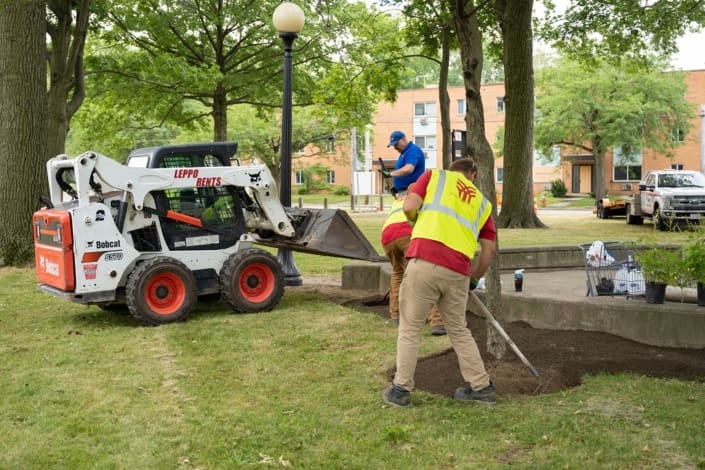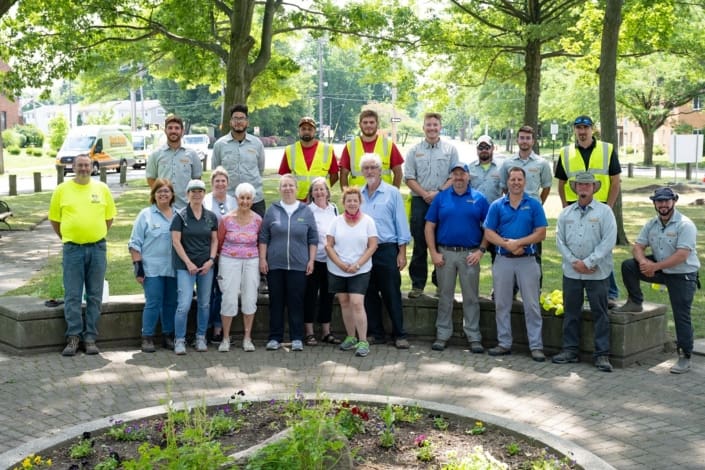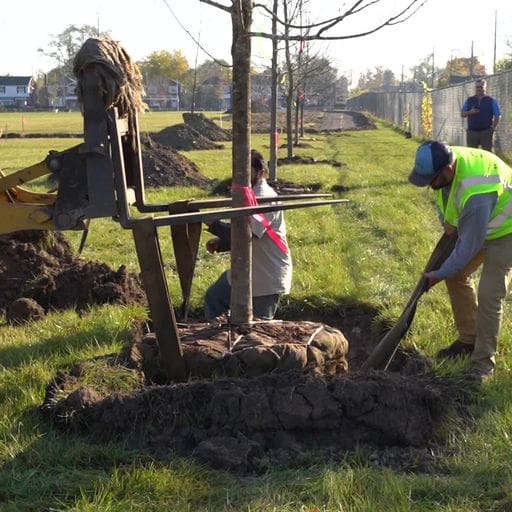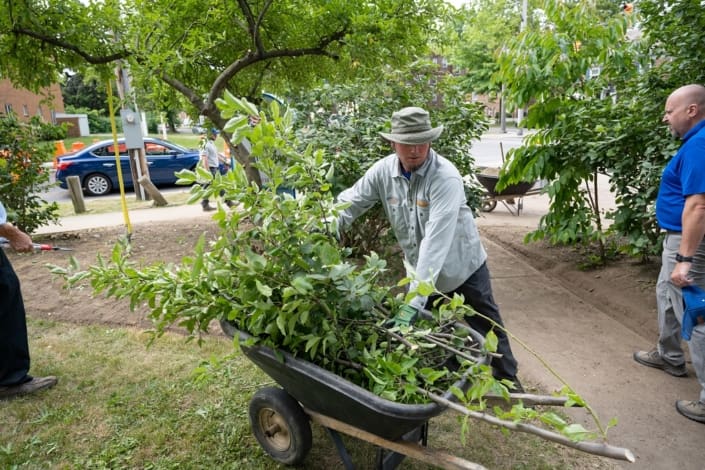
There is no shortage of public green spaces and parks in need of renovation.
This is why in 2008, Project EverGreen created the GreenCare for Communities initiative to revitalize community green spaces. Since their first project in Akron, Ohio, GreenCare for Communities has restored nearly 200 million square feet of healthy grass.
Restoring these green spaces has multiple benefits, including reduced air pollution, increased property values, and improved mental and physical health for residents. Cindy Code, executive director of Project EverGreen, says they look for park projects that will have a significant impact environmentally, socially and economically.
Identifying Projects
Because the need is great, collaboration is key. Project EverGreen tries to find areas they can support through professional volunteers, city parks and rec engagement, donors and the community.
“The community is always the first step because landscape professionals all day any day can go in a transform a park in a day and be gone, but we have a more long-term vision,” Code says.

Project EverGreen will have visionary sessions where the community can identify what they want in the park, because it is their park and they’re the ones who are going to live near it and use it.
They also take into account sustainability. Project EverGreen wants to make sure the city can maintain the park and it won’t fall back into disrepair after they leave. Code says often a park is done, it has a ripple effect. If the park can be brought back to a level playing field and the city can maintain it, they often receive funding to add other things to the park and keep improving it.
They try to keep the parks low maintenance, but Code says community groups need to be involved in maintaining the trees as most city parks don’t have irrigation systems. Sometimes volunteer groups or a landscape partner commits to watering the new plants.
Code says they never want to go into a city and do a one-and-done renovation. They try to build their footprint in that city and keep an eye on past projects they’ve worked on. Detroit and New York City are two of the locations where they have grown their footprint.
“We try to be thoughtful, but primarily we work where we have bandwidth and collaboration,” Code says. “We look at our current donors and our current partners. Cities that need help where they’re under-resourced. Cities that don’t have the budget to maintain their parks.”
Code says Project EverGreen tends to select the parks that others wouldn’t pick because they need the most work. She says most of the time, cities are in disbelief when presented with the opportunity for a free renovation.
Anyone is welcome to nominate a park, playing field or green space for renovation on GreenCare for Communities website.
Renovation Process
Code says they strive to improve six parks a year, but they’re also looking to expand their bandwidth. Typically, they are talking to 10 to 12 cities to plan what projects will take place in a year. Code says putting a calendar together is the hardest thing as it depends on the city bringing it all together.
Detroit and New York are templates for how they’d like to do projects across the country. Right now, they’re trying to look a couple years down the road and identify their next projects a few years in advance.
“If we get ahead of the curve that way, then we can put those on the calendar earlier, and then we can recruit people to participate,” Code says.
Depending on the participation of their partners and donors, Project EverGreen may complete the project in one or two phases. Code says they try to make it a long enough timeframe so they can involve everybody.
Project EverGreen tries to get as many items donated as possible, from fertilizers to pavers. They also have donors for specific park projects and will use that money to pay for certain features, such as a pathway, as pavers are harder to get donated.
In one instance, they bought 17 trees from Re-Tree, which saves mature trees from other sites.

“This park that had no trees, instead of putting in really small caliper trees, we put these 20-year-old trees in around the park,” Code says. “They’re blooming slowly, but they’re blooming so it’s going to have a night and day impact on the shade in that park.”
Project EverGreen creates a project page for every project they’re working on as well as a timeline of when they’re seeking volunteers, donations, or materials. Work days are scheduled so volunteers know exactly when they’ll be needed.
Code says they need as many volunteers as they can get and try to ensure if they take the day off to volunteer, there is enough work for them to do. In cities where they have multiple parks they’ve worked on, they can send some to clean up a nearby renovated park.
From start to finish, Code says a project typically takes a year to complete.
Code says they’re aware most of their partners are professional landscapers who are not available in the spring, so a lot of their work is done in the fall when they’re more available and sometimes in the winter depending on the area. Some volunteers participate in their projects every year and their employees want to know the date for next year’s project.
Dave Petti, president of Turf Pride Lawn Care, based in Mentor, Ohio, says the first project they helped work on was Helen Simpson Park in Cleveland, Ohio. They helped make new flower beds, spread mulch, plant trees, flowers and more. When that work was completed, they fertilized the lawn and sprayed weeds. Petti says they plan on doing aeration and overseeding there this fall.
“We had nine employees, including myself,” Petti says. “I was thrilled with the amount of our staff that wanted to volunteer and I was very impressed to watch how much pride my team took in that project.”
Petti says many people came up to thank them for the work they were doing. He says doing good for others and the community gives you a sense of accomplishment and pride.

“Everybody loves it,” Code says. “The landscape industry is so generous. They give back in so many ways on their own, but I think the hardest part is identifying the project and the project management, lining everything up. So if we do all that for them, and they can bring their team and show up for a day, it’s just the most rewarding feeling they’re sharing. They’re sharing their daily expertise.”
Hope is another byproduct of renovating local parks. While most remodeling goes to downtown areas, Code says that’s not where people live, so families around cities can feel left out.
“Parks bring people hope,” Code says. “Because if somebody cares about their neighborhood, someone cares about them. And the park becomes a community hub where people go to gather, have parties or the kids play, or you meet your neighbors, and you watch out for your neighbors.”
If you are interested in volunteering with GreenCare for Communities, click here, and you’ll be notified when a project in your area becomes available.
Below are the planned location and project dates for this year’s GreenCare for Communities projects:
- New York City – July
- Detroit – Fall
- Louisville – October
- Raleigh – TBD
- Cleveland – TBD
- Fort Myers, Florida – TBD

